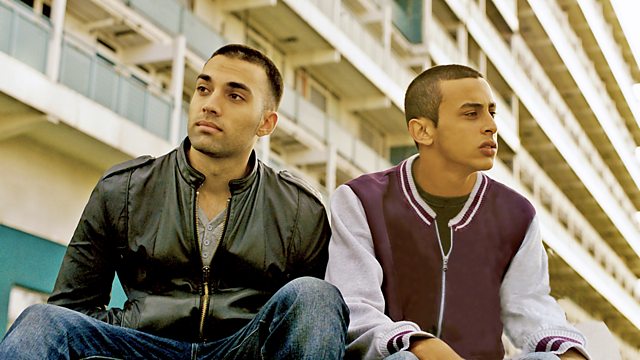 My Brother the Devil is a 2012 British crime drama film, written and directed by Sally El Hosaini. It has won several awards, which include the 2012 Sundance Film Festival and at the 2012 Berlin International Film Festival. It features James Floyd as Rashid, Fady Elsayed as Mo and Saïd Taghmaoui as Sayyid. The film is about two brothers of Egyptian background living in east London. It was released in the UK on 9 November 2012 and was in US cinemas from 22 March 2013. The companies that produced the film are Rooks Nest Entertainment, Wild Horses Film Company, Film-Clinic and Blood Brothers Films.
My Brother the Devil is a 2012 British crime drama film, written and directed by Sally El Hosaini. It has won several awards, which include the 2012 Sundance Film Festival and at the 2012 Berlin International Film Festival. It features James Floyd as Rashid, Fady Elsayed as Mo and Saïd Taghmaoui as Sayyid. The film is about two brothers of Egyptian background living in east London. It was released in the UK on 9 November 2012 and was in US cinemas from 22 March 2013. The companies that produced the film are Rooks Nest Entertainment, Wild Horses Film Company, Film-Clinic and Blood Brothers Films. The genres that My Brother the Devil conforms with are romance, crime and Drama. This is because of the drug dealing, killing and mugging throughout the film, drama with gangs and romance between the characters. There are many themes in the film which are family, religion, love, conflict, relationships, prejudice and identity.
Mise-En-Scene was used in order to create an environment which is seen as fairly rough. The characters live on an estate and this was shown by the establishing shots of towering, crowded flats throughout the film. The graffiti on the walls enhanced the idea that the characters lived in a rough, depleted area and the characters could be seen wearing clothes such as hoodies in order to blend in and stay out of the way, keeping a low profile at times when they did not want to be easily noticed. Another thing that was effective throughout the movie was Mo’s clothing. At the beginning of the film Mo is seen wearing bright colours but as the film progresses, he goes from being a school boy to being a drug dealer which meant that his choice of clothes changed as well. During his time with the dealers Mo started to wear dull colours like grey and black or navy blue. This represents how his innocence of being a young school boy has changed and he is now trapped in the life which his brother wanted him to avoid.
Camera angles and shots were extremely important in making this movie realistic and effective. Simple things such as the camera following the movement of someone taking a drink makes the movie more realistic and the audience feel like they are there with the characters. The cinematography in this movie was absolutely amazing. The shots of the estate and the surroundings made where they live look like a better place than what it actually was, this could represent how Rashid (the older brother) wanted a better life for him and Mo. Another effective technique was how the camera angle started off looking down on Mo, and throughout the movie the camera angle started to look up at him. This represents how Mo made his way to the top (making money from dealing drugs), whereas before he was a little boy being protected by his older brother.







